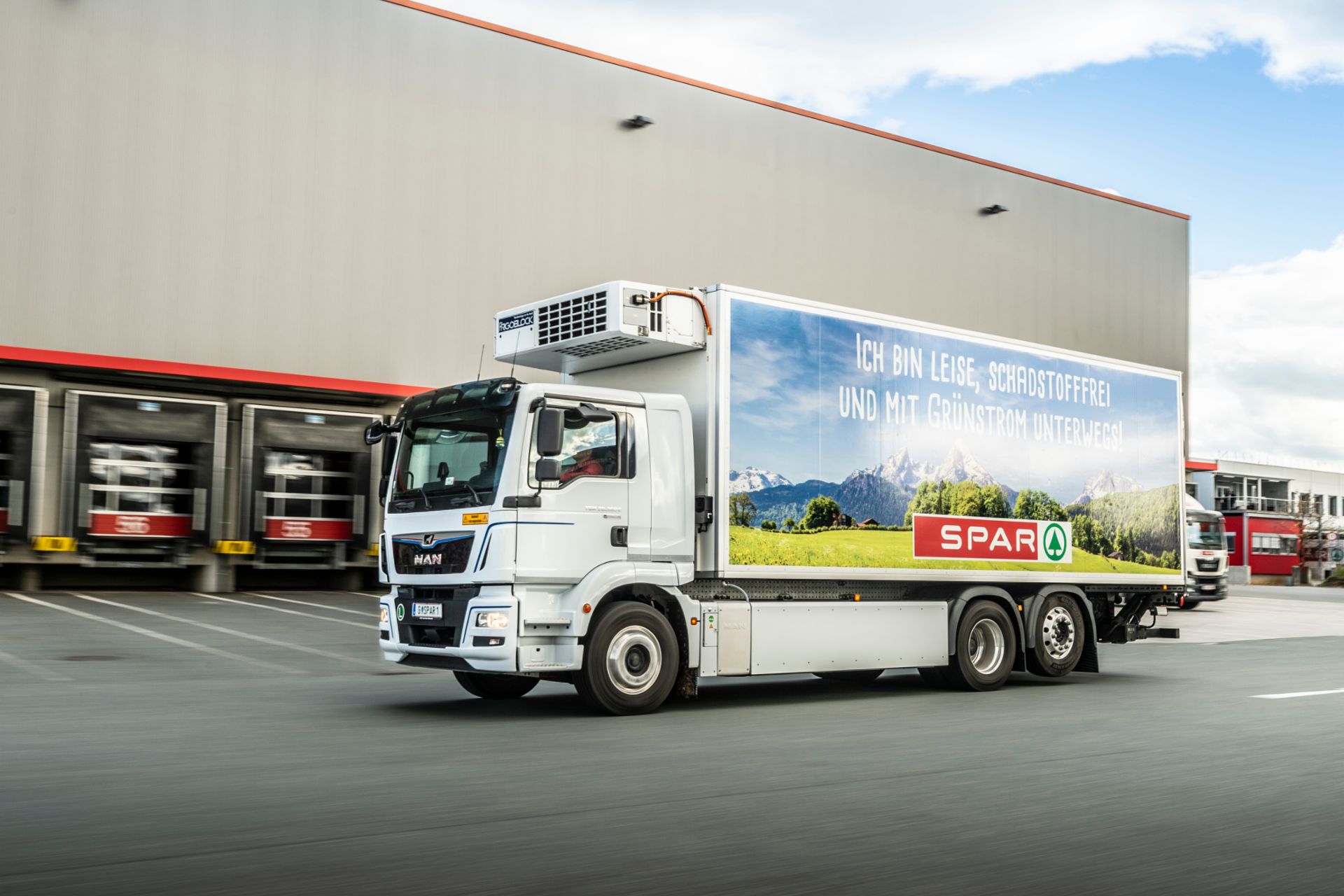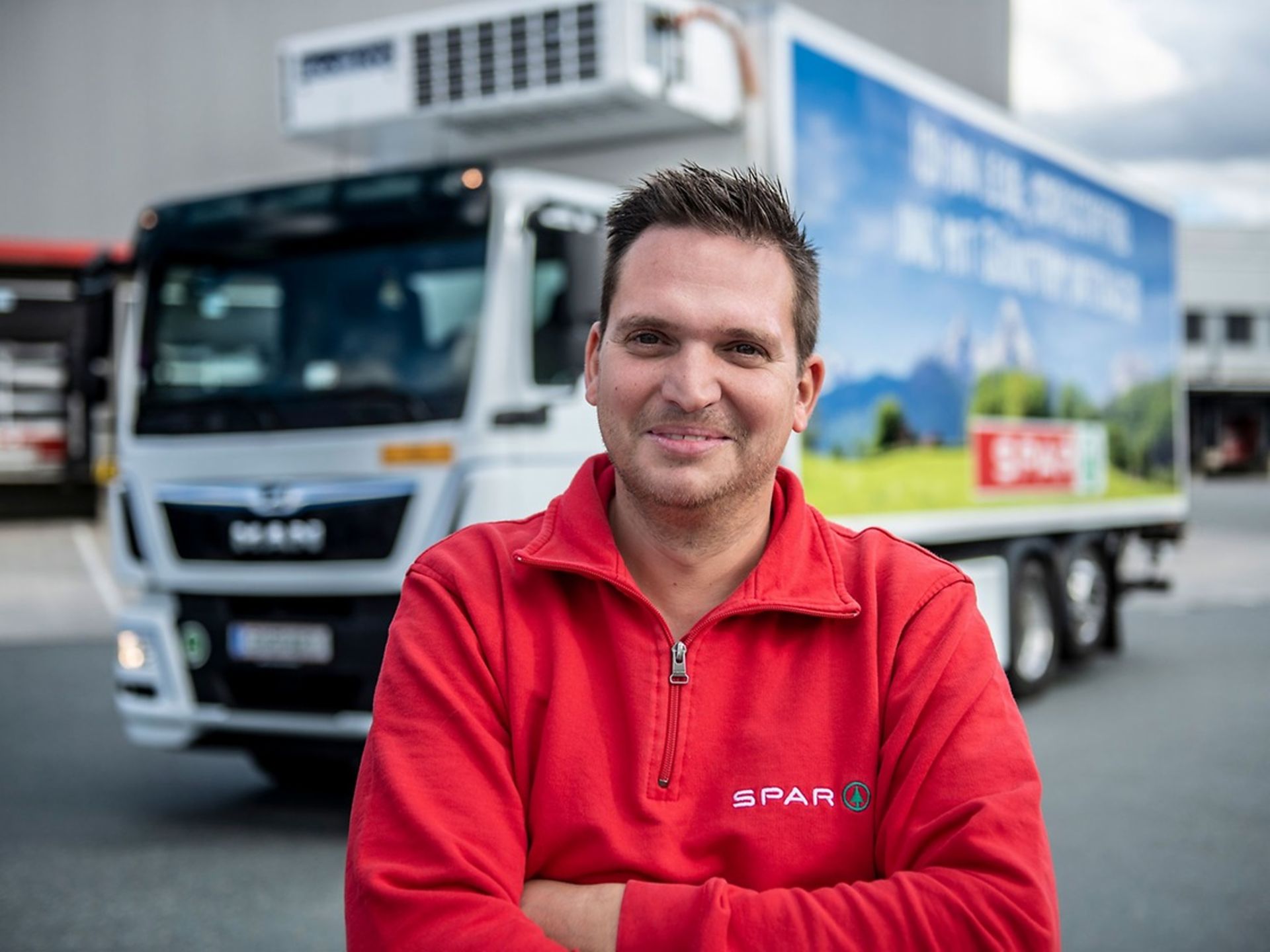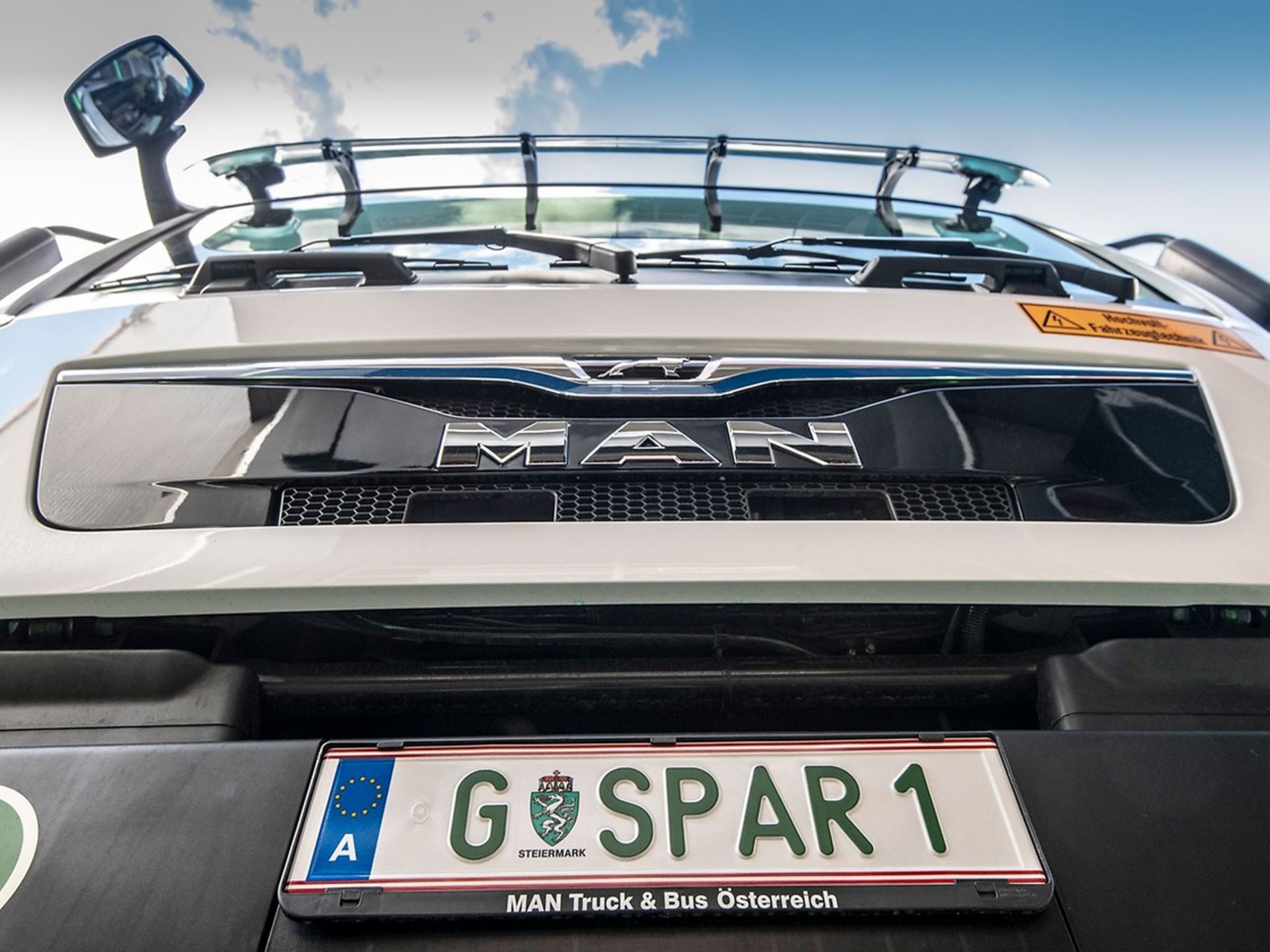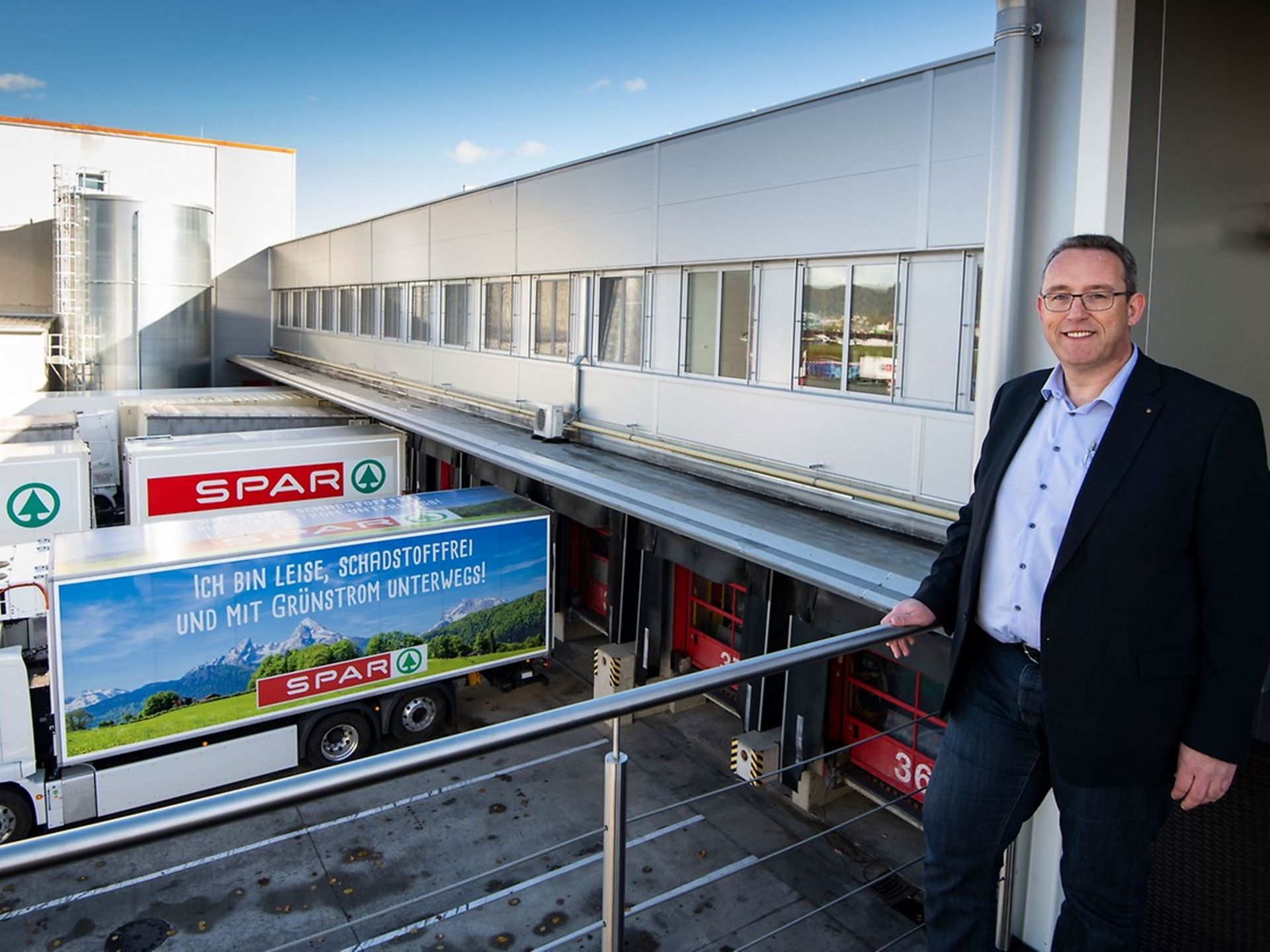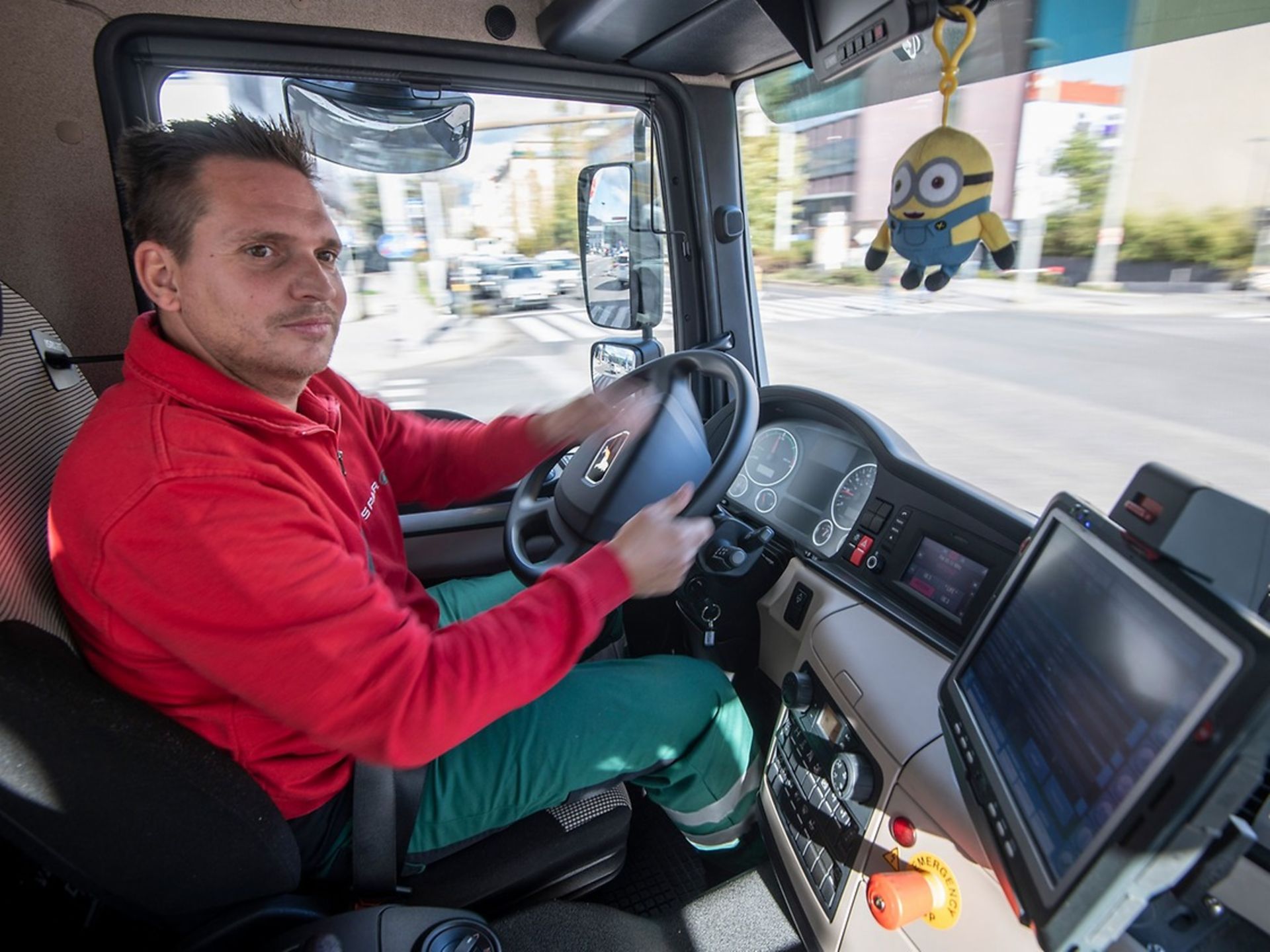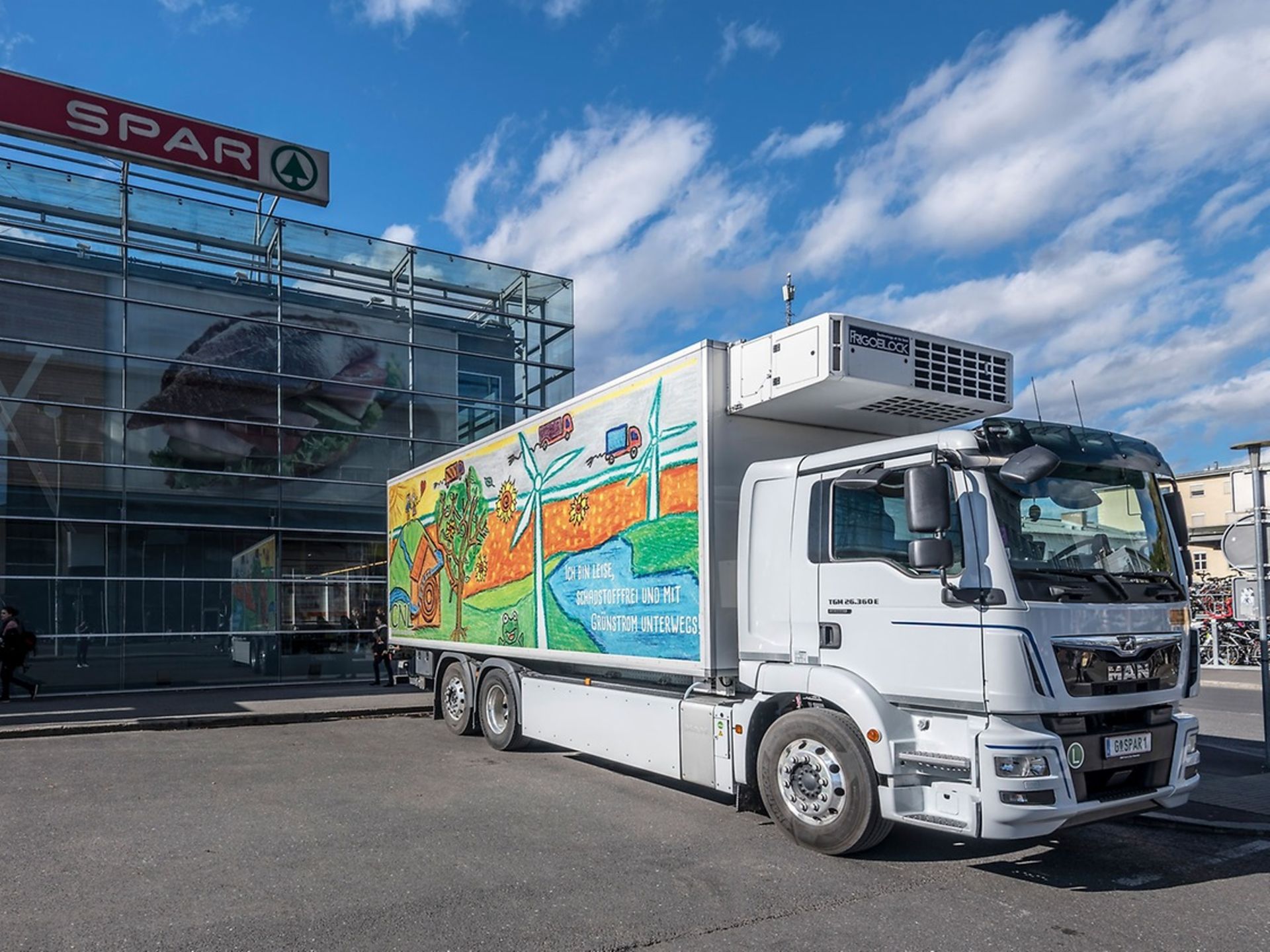Interview: Christopher Holzer, Managing Director of the SPAR headquarters in Graz, Karlheinz Riedl, Central Transport department, and Martin Neumann, truck driver and eTruck tester.
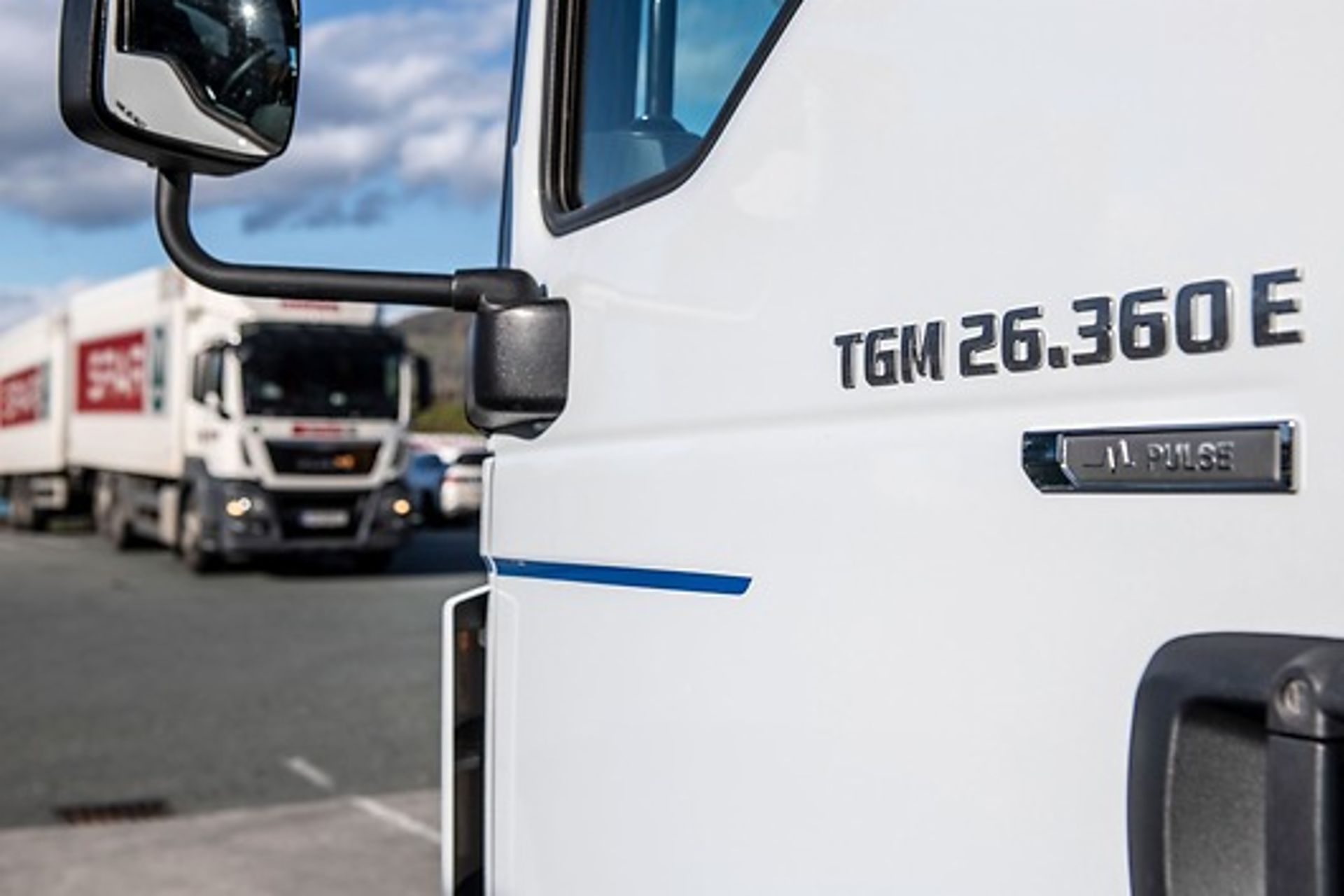
Hello, Mr. Holzer, Mr. Neumann, Mr. Riedl—how is the new electric addition to your fleet getting on?
Christoph Holzer: From what I hear from my team, it’s been performing without any problems, in terms of both range and reliability. And with a good utilization rate. So far, we haven’t reached its range limit.
Martin Neumann: For me, it’s just brilliant to be driving it! I can’t describe it, you’d have to try it yourself. I wouldn’t want to have to give back the eTruck!
Karlheinz Riedl: Very good! For me, it’s always a question of how much enthusiasm the topic is approached with. You really have to “live” it and integrate it into your work routine. I think we’ve successfully managed that with this vehicle.
Why did SPAR decide to participate in MAN’s field test?
Christoph Holzer: SPAR’s mobility strategy has been clearly focused on seriously considering alternative options for some time now. A few years ago, there was already a first test with a hybrid truck in the city area of Vienna. When the eTruck topic came up in the Council for Sustainable Logistics, I realized immediately that our location in Graz Puntigam was just perfect for it. It’s the only headquarters that is located right at the heart of a major city. We have over 40 customers—SPAR and InterSPAR shops that we can deliver to with a range of up to 180 km.
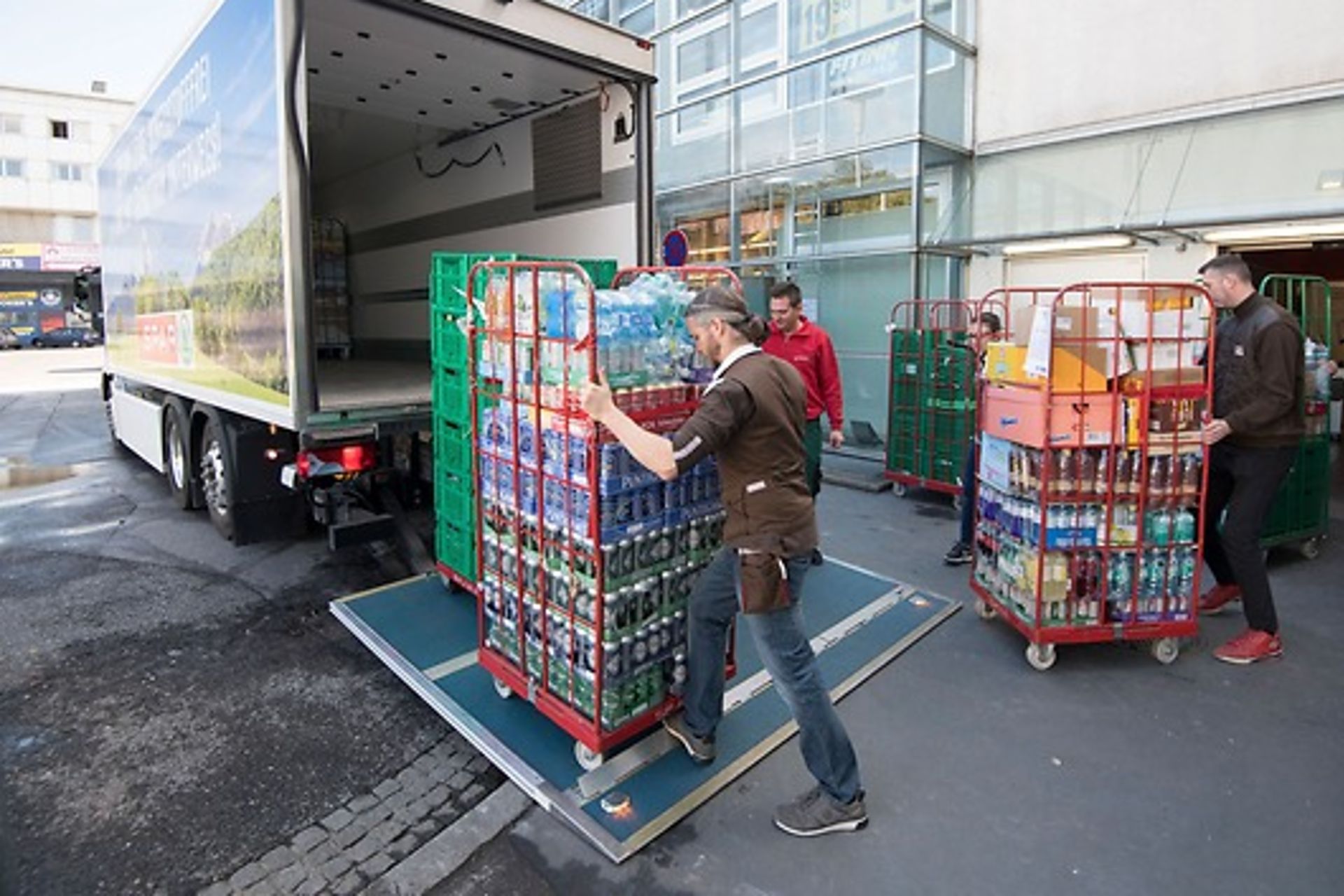
How are you using the MAN eTGM?
Karlheinz Riedl: The truck has a refrigerated box body, electric cooling, and a liftgate, meaning it’s designed for food logistics, and we use it in all areas of delivery in a two-shift rota. It works pretty much identically to our standard vehicles, the only difference being that the charging times have to be taken into consideration.
Martin Neumann: During the early shift, I deliver to three to four customers, which adds up to about 70 km. My colleague in the afternoon does the same. At the moment, I’m using a maximum of about 50% of the battery during my shift. That means that we could currently cover both shifts without having to charge during the lunch break. The only reason we do anyway is that we transport fresh goods and have certain time slots for our customers, meaning it’s better to be on the safe side.
How does the eTGM compare with the standard TGM?
Martin Neumann: In terms of performance it’s really “beyond comparison.” It has the equivalent of 360 HP, while my previous diesel truck had 460 HP. That means it has 100 HP less but the acceleration is incredible. I also quickly got used to the fact that certain noises are missing. But I certainly don’t miss them. First thing in the morning you have to check if it’s fully charged, but that’s not really different to having to refuel. It’s also interesting that passers-by and other truck drivers often ask about the eTruck. They see the label and want to know if it’s really a 100% electrically powered truck. Of course, I tell them it is! Most people find it hard to believe at first, but then they’re fascinated.
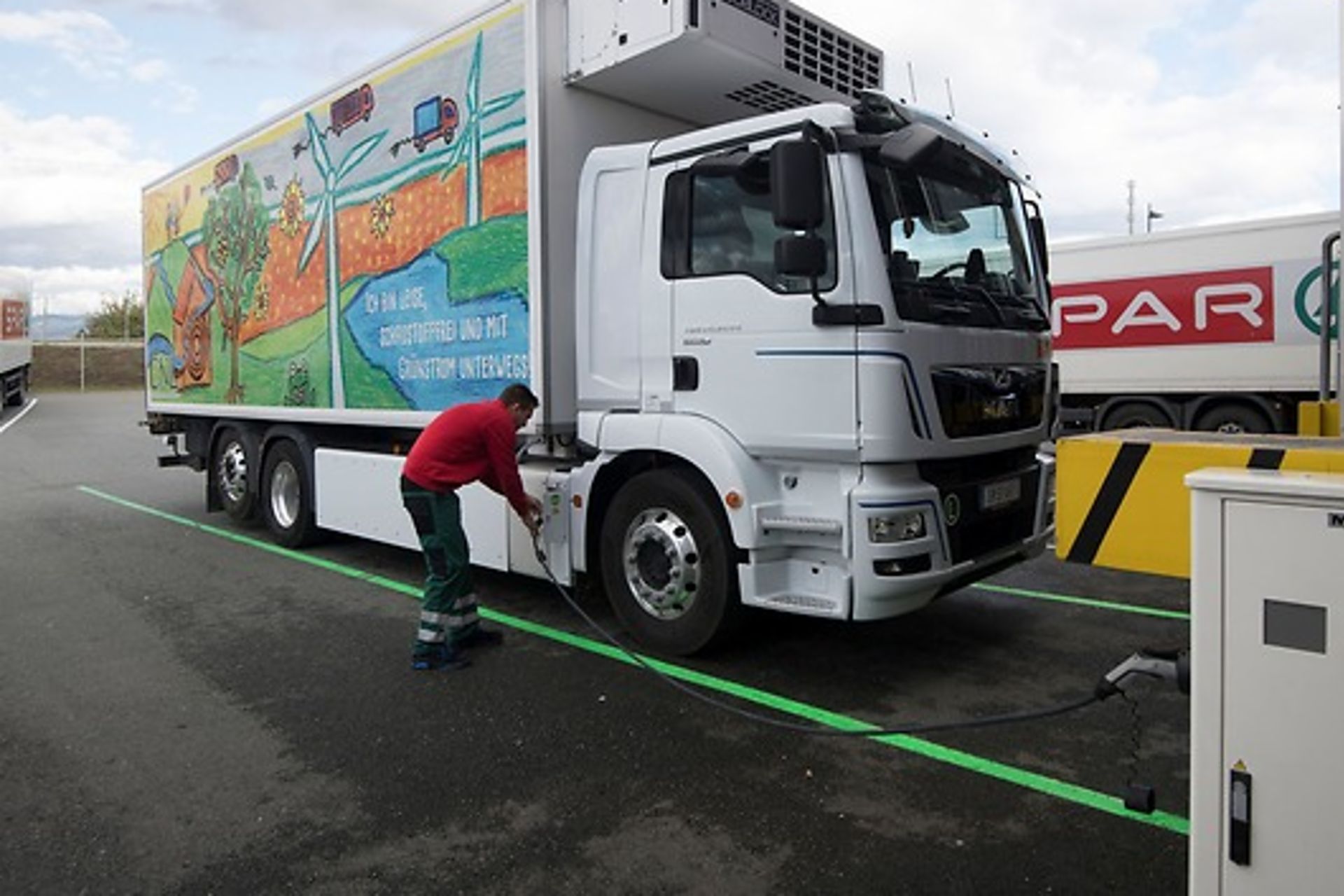
It sounds as though the MAN eTruck is very well suited for practical application.
Karlheinz Riedl: At our location in Graz we have 28 trucks in our vehicle fleet, mainly from the MAN TGS series, all 26-ton vehicles. That means that the MAN eTGM fits in really well with us.
Can you see eMobility being the future of the logistics sector?
Christoph Holzer: I think we’ll find out in the next few years if it’s possible to implement this on a large scale. It’s not just about technical solutions but also a matter of costs. How much will such a truck cost in series production and would the government be willing to provide funding to cover some of the costs? In my opinion, it all depends on a variety of different aspects.
Karlheinz Riedl: Apart from further developing the energy storage solutions and thereby increasing the range and lowering costs, another decisive factor when it comes to electro mobility in the logistics sector is the charging infrastructure. Integrating an eTruck using a 44 kW charger wasn’t a problem and is also reasonable in terms of costs. However, if I want to switch to high-power charging for an entire fleet, the costs start looking slightly different.
So the costs are still a disadvantage. What do you see as an advantage?
Christoph Holzer: Because we’re using green energy for the eTruck, it can realistically reduce local emissions by approximately 40 tons of CO2 per year. Graz is one of Austria’s cities that is most heavily polluted with fine particulate matter. I think that makes the advantage self-explanatory.
